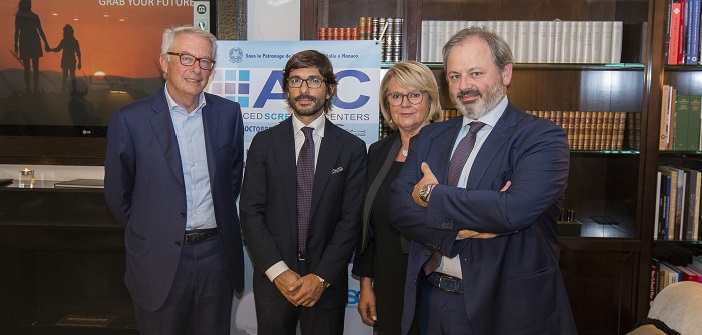The proposed DWB by Advanced Screening Centers Italia (ASC Italia), a nonprofit Italian association, was presented in Monaco during an event organized around the publication of the book “Magic Box and All the Way to Prevent It” written by Dr. Giuseppe Petralia, deputy director of radiology at the European Institute of Oncology and researcher at the University of Milan, in collaboration with two journalists specialized in medical information (and co-authors of the book), Riccardo Renzi and Edoardo Rosati. The day, under the Patronage of the Embassy of Italy in Monaco, also saw participation from Mrs. Piera Esposito, president of ASC Italia, and its Vice-President Maître Pietro Arcangeli.
On this occasion, the President of ASC Italia wished that all proceeds from the sale of the book available at CREM throughout October would be donated to the Monegasque association Monaco Liver Disorder which, since 2014, has been helping and supporting medical research to overcome severe liver diseases in children.
According to the WHO, at least one-third of cancers diagnosed worldwide could be prevented. Prevention is the most cost-effective long-term strategy to combat cancer.
A study published in the Annals of Oncology estimates that in Europe, 250,000 cancer deaths could be prevented through prevention. The reason: the smaller a tumor, the greater its chances of being cured. And the risk of side effects from therapies is lower.
Background
DWB has been used since 2009 by the European Institute of Oncology in Milan and by two London hospitals (three other centers are under construction in London, Cambridge, and Rio de Janeiro) to monitor cancer patients and detect potential metastases.
DWB as a preventive test
The creation of DWB marked a major evolution in magnetic resonance imaging (MRI) because it allows for the exploration of the entire body in a single pass. It is the addition of innovative technologies (hardware, new configurations, and software developed by the IEO and researchers worldwide) to an existing device that enables the detection of tumors.


